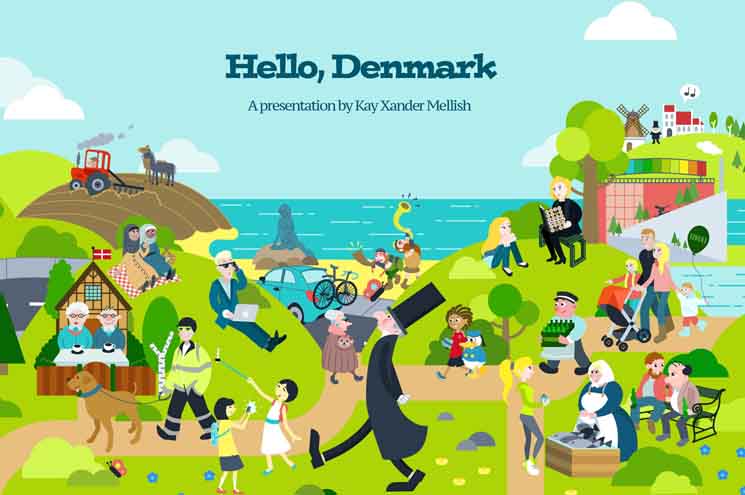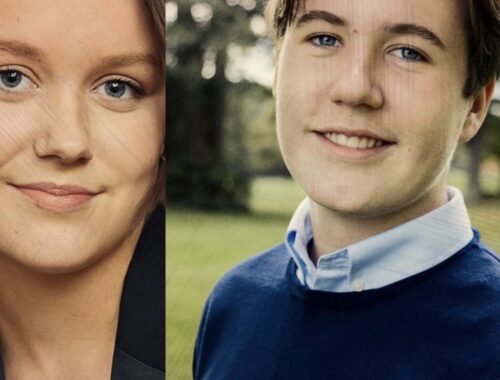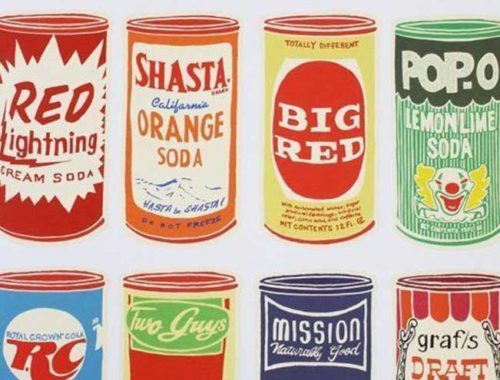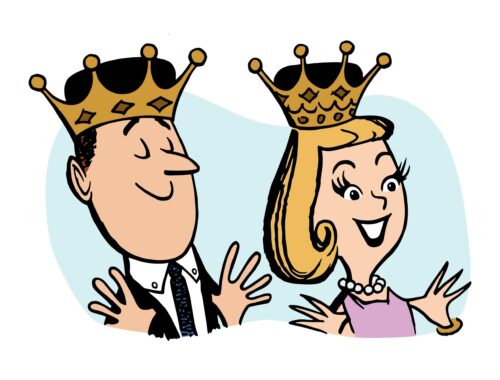To celebrate the fifth anniversary of the “How to Live in Denmark Podcast” – which launched in summer 2013 and has since racked up more than a million downloads – I wanted something special and memorable.
I had long been a fan of Danish cartoonist Claus Deleuran’s 1992 image, “Danes, Danish, More Danish”, done for an exhibit at the Nikolaj Kunsthal, but had always been frustrated that it only seems to exist online small, low-res versions.
I thought it would be fun to recreate it – and as long as I was redrawing it – to reflect the Denmark of today.
Although I have drawn cartoons in the past, this particular image is not drawn by me. I commissioned Polish graphic artist Karolina Kara to help me to create it, explaining to her exactly how I wanted each of the characters to appear.
I also gave her photos to work with, such as a picture of the trademark “Copenhagen bench” the beer drinkers are sitting on in the foreground to the right.
More diversity
The increasing diversity of the Danish population is reflected in the new drawing. In 1992, only 5% percent of the Danish population was made up of immigrants and their descendants, according to Danmarks Statistik. By 2018, that had grown to 8.6% of the population, and 14.5% of the population under age 20.
I wanted to represent the many children with one Danish parent and one non-Danish parent, which is why I added a biracial skateboarder in a Denmark national team jersey. I also added two young Muslim women in traditional clothing enjoying a picnic, which is something I see frequently in the park near my home in Copenhagen.
Stuff I got rid of
Over the past two decades, Denmark has shifted towards becoming a knowledge economy, leaving behind its manufacturing and shipbuilding roots. I replaced the factories on the right side of Deleuran’s drawing with the AROS museum in Aarhus, complete with Olafur Eliasson’s circular rainbow exhibit on top.
I also added Copenhill, the new Amager-based waste station with a ski slope on top, which was designed by the internationally-known Danish architects Bjarke Ingels Group.
And I updated the cars and clothing form the original image, putting a construction worker in the kind of high-viz work clothes more common today.
I eliminated a policeman chasing a squatter, which was topical in Deleuran’s day but not so much any more.
Instead, I added some of the Chinese tourists who have made Hans Christian Anderson a popular 21st-century tourist attraction.
Something things haven’t changed
Some things haven’t changed. I kept a farmer, an important part of the Danish economy often forgotten when the focus is on chic modern cities.
I kept the classic Danish summerhouse with the Danish flag and cups of coffee. And I kept Denmark’s Viking heritage, as well as Grundtvig, a windmill, and a traditional Lutheran church.
Knowing that people tend to steal images off the Internet, I also added myself to the drawing, reading my first book How to Live in Denmark. Anyone who reproduces the drawing will be giving me some free advertising as well.
See a larger version of the image
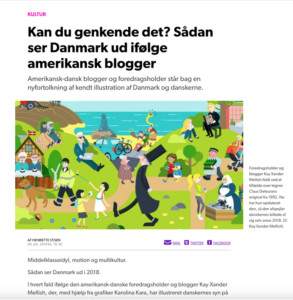 If you’d like to see larger and more detailed versions of both my version and the original Claus Deleuran cartoon (I went to the Nikolaj Kunsthal to photograph their archival material), visit my sub-site at www.http://welcometodenmark.net, where you can also book a “Welcome to Denmark” speech for newcomers to your company or school.
If you’d like to see larger and more detailed versions of both my version and the original Claus Deleuran cartoon (I went to the Nikolaj Kunsthal to photograph their archival material), visit my sub-site at www.http://welcometodenmark.net, where you can also book a “Welcome to Denmark” speech for newcomers to your company or school.
If you read Danish, you may also enjoy dr.dk’s excellent article about the Welcome to Denmark drawing. And you can contact Karolina Kara via her Instagram.
Hear all our How to Live in Denmark podcasts on Spotify and on Apple Podcasts.
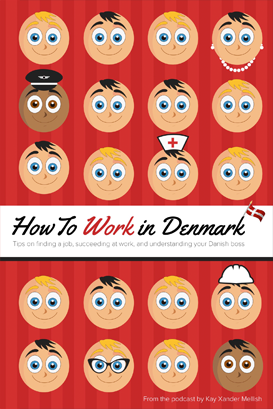
Get the How to Work in Denmark Book for more tips on finding a job in Denmark, succeeding at work, and understanding your Danish boss. It can be ordered via Amazon or Saxo.com or from any bookstore using the ISBN 978-743-000-80-8. Contact Kay to ask about bulk purchases, or visit our books site to find out how to get the eBook. You can also book a How to Work in Denmark event with Kay for your school, company, or professional organization.
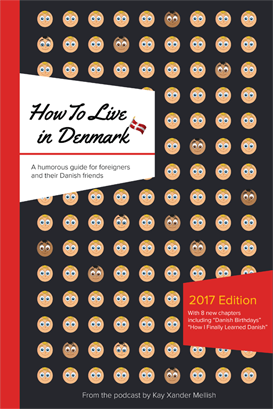
Want to read more? Try the How to Live in Denmark book, available in paperback or eBook editions, and in English, Chinese, and Arabic. If you represent a company or organization, you can also book Kay Xander Mellish to stage a How to Live in Denmark event tailored for you, including the popular How to Live in Denmark Game Show. Kay stages occasional free public events too. Follow our How to Live in Denmark Facebook page to keep informed.
Image mashup copyright Kay Xander Mellish 2025

